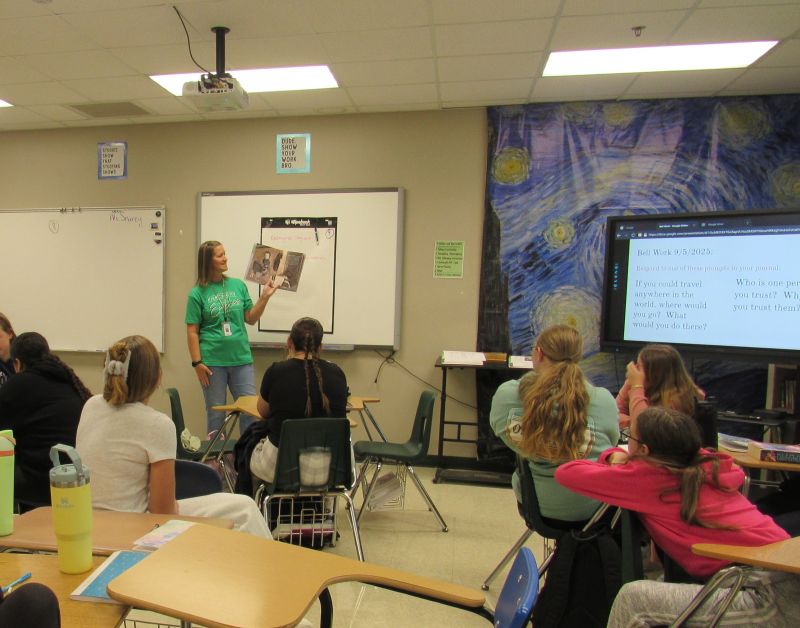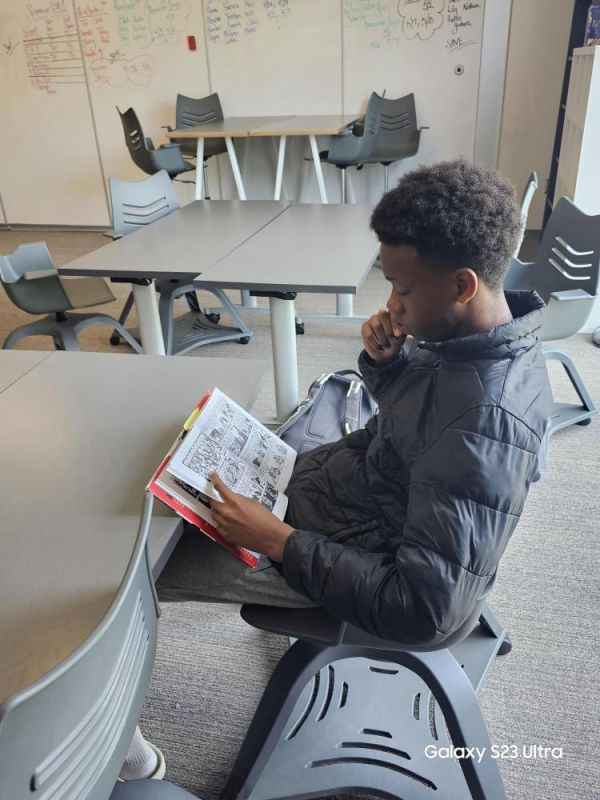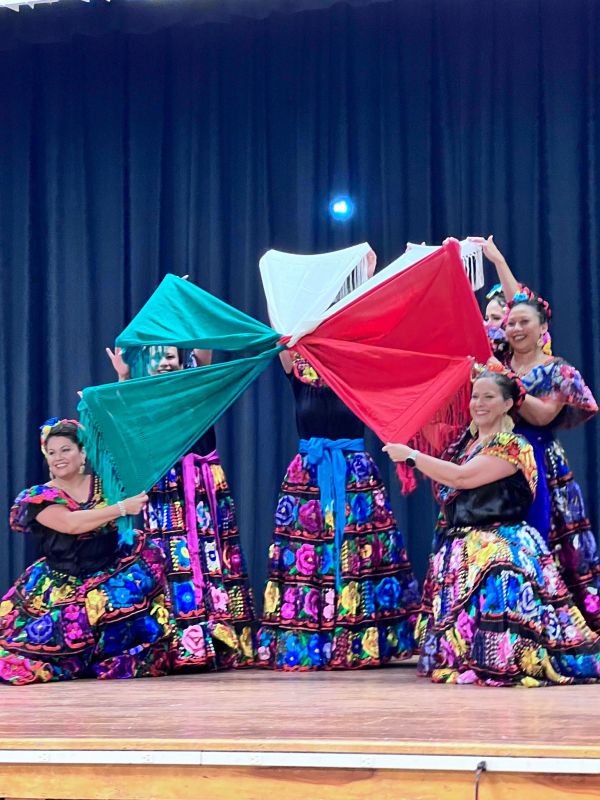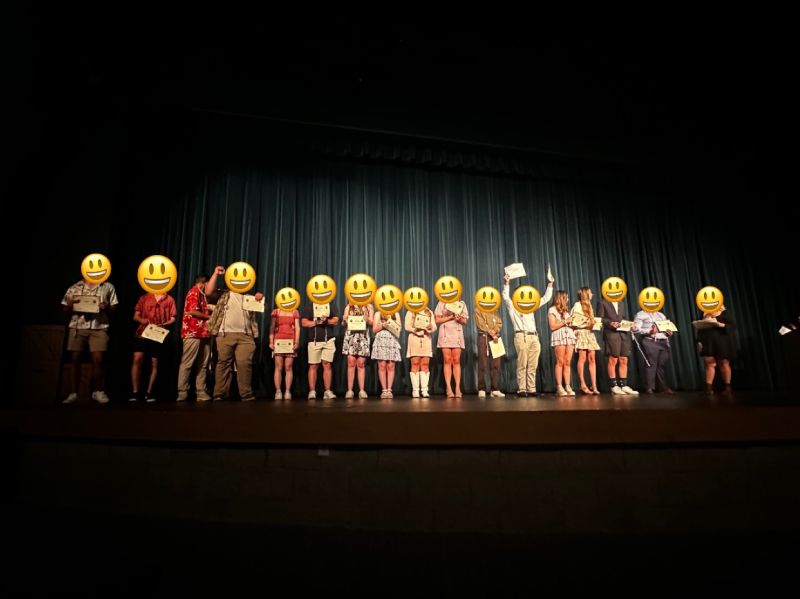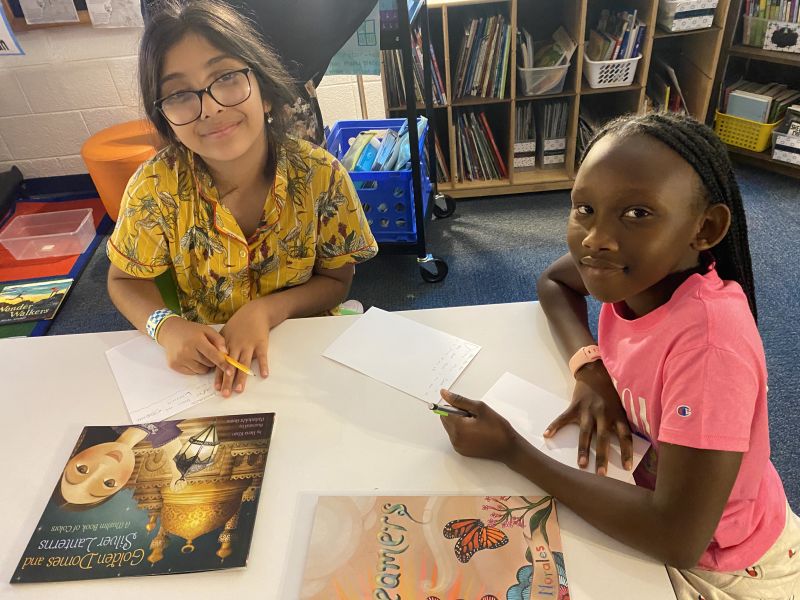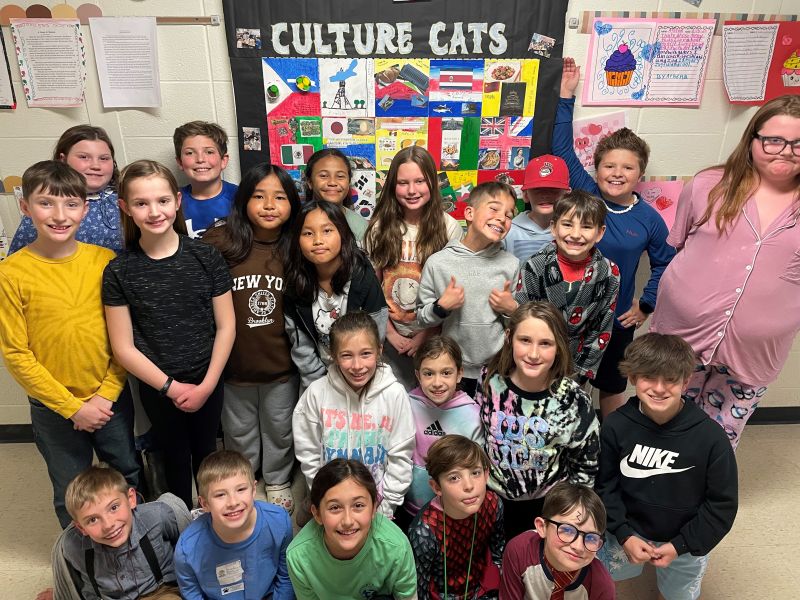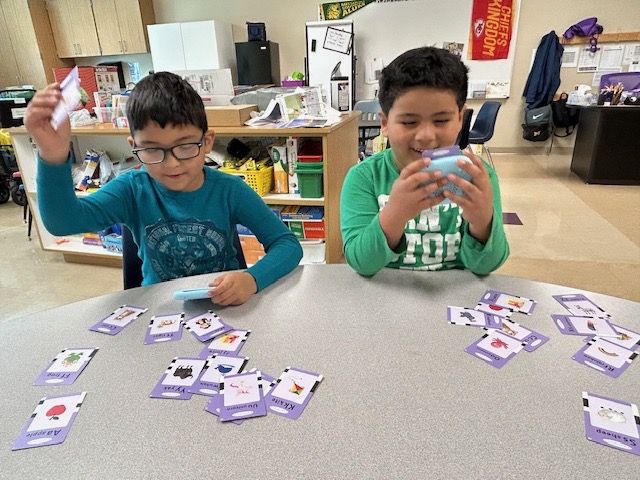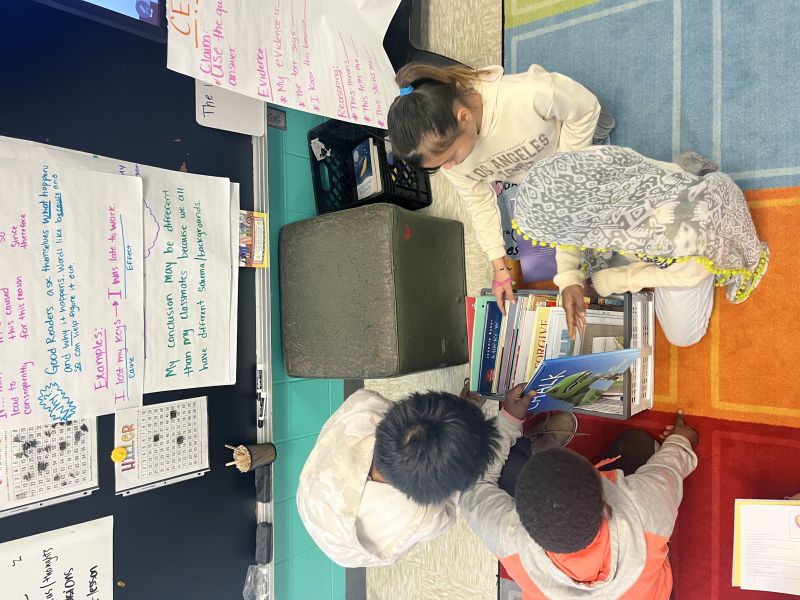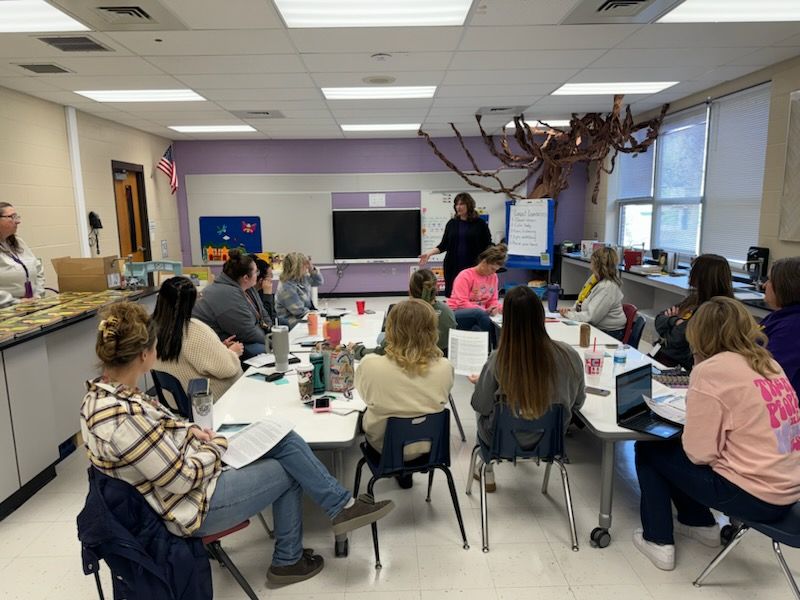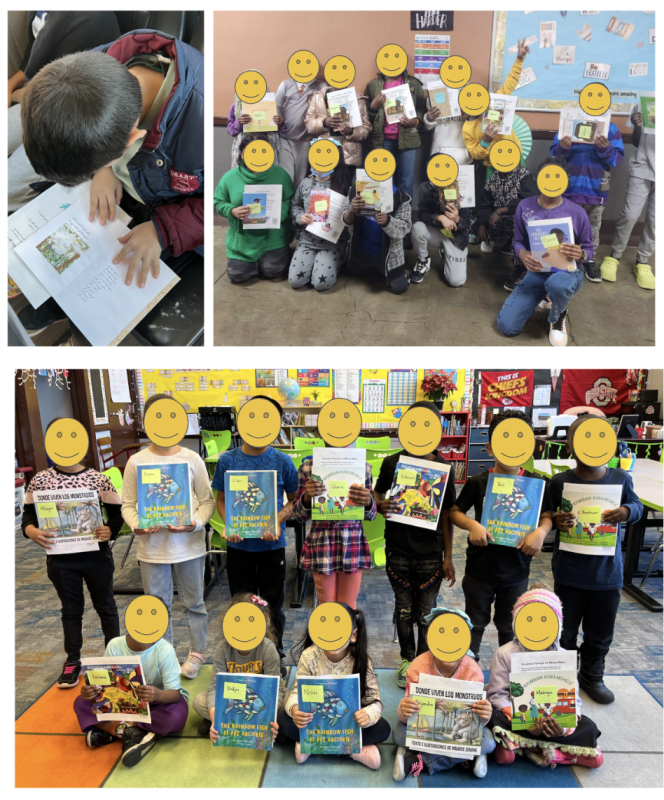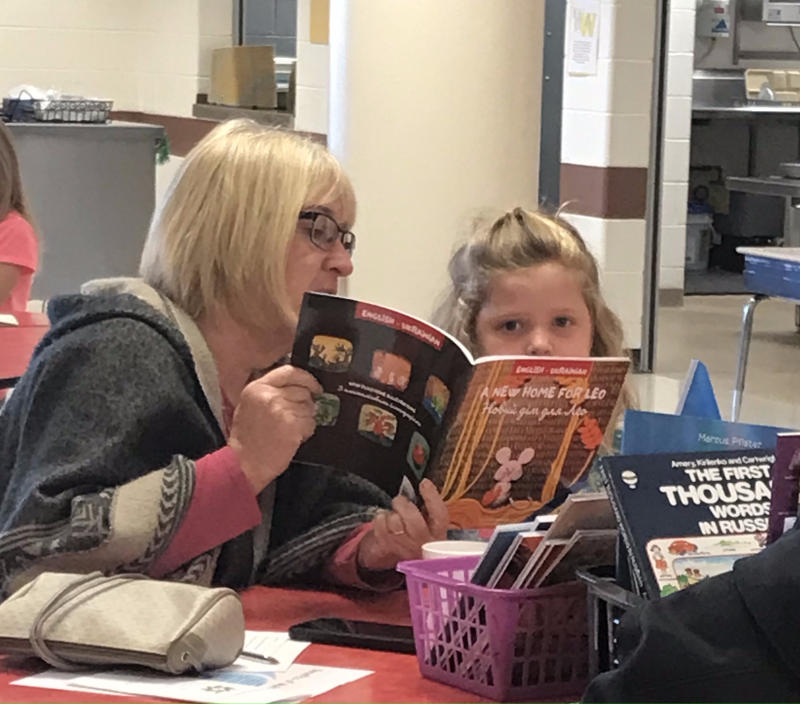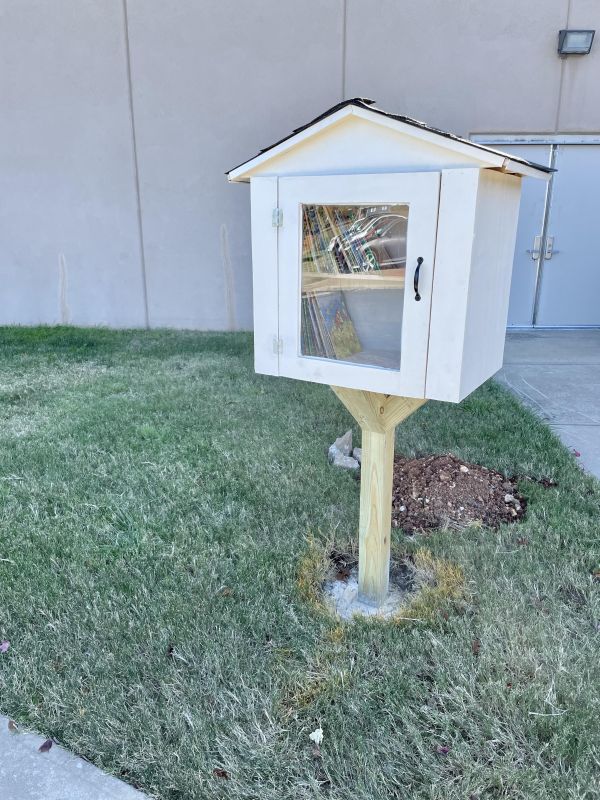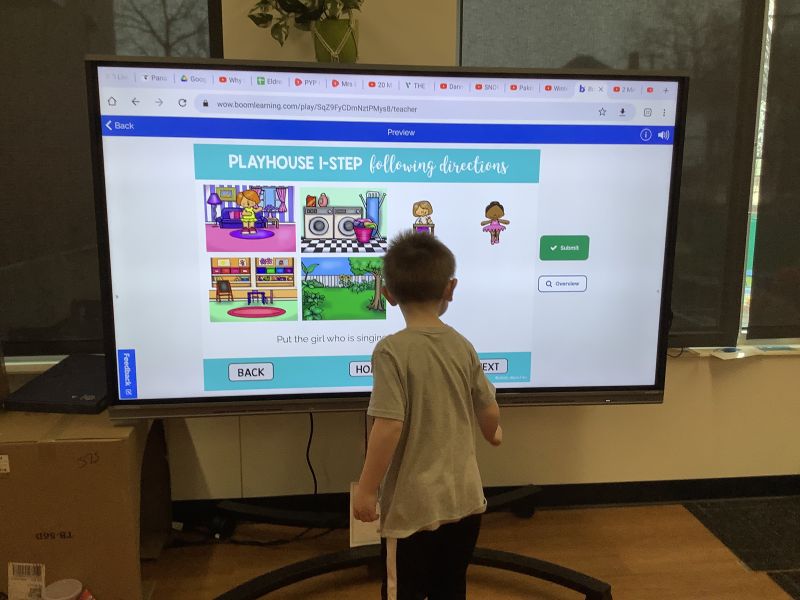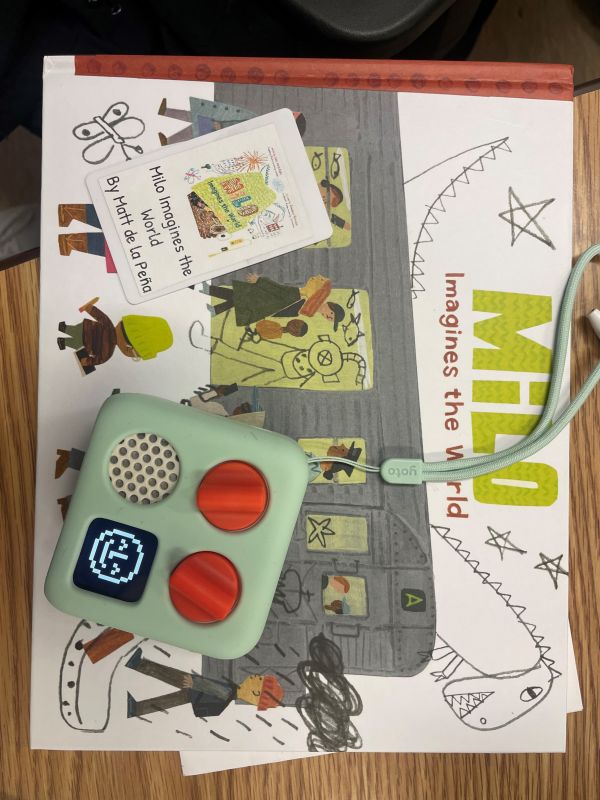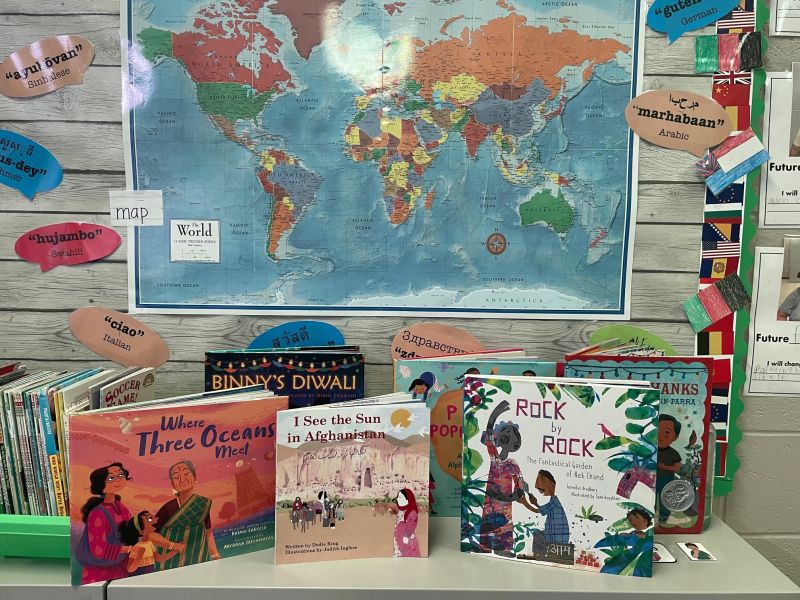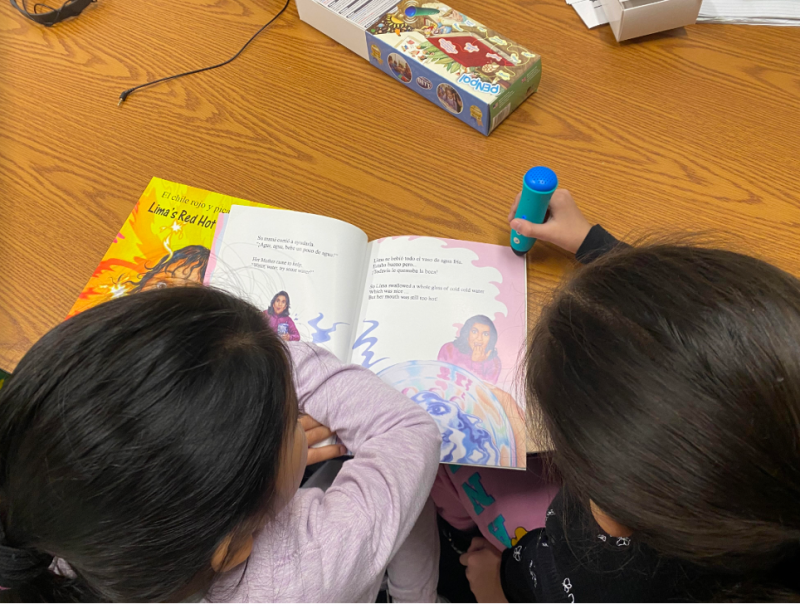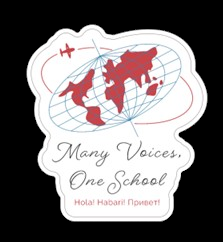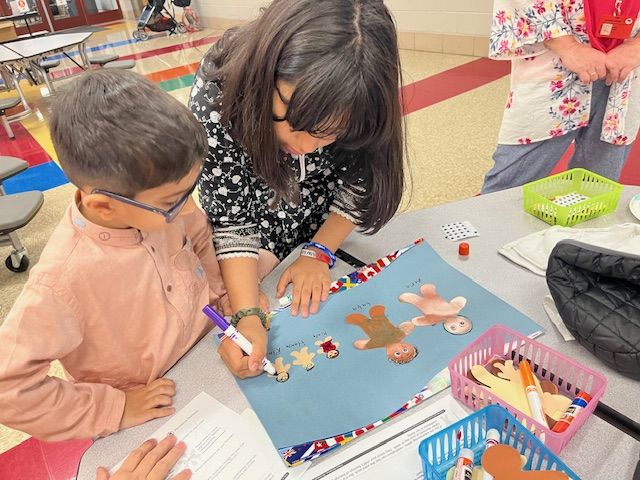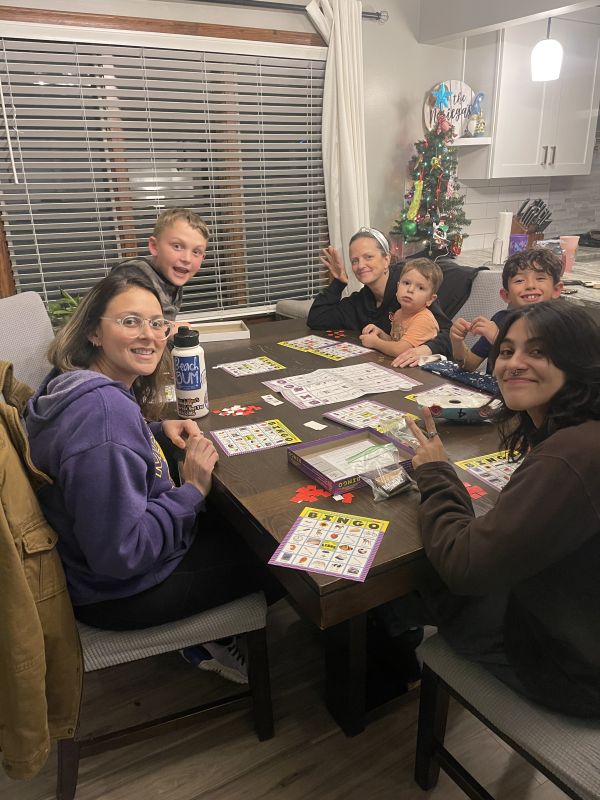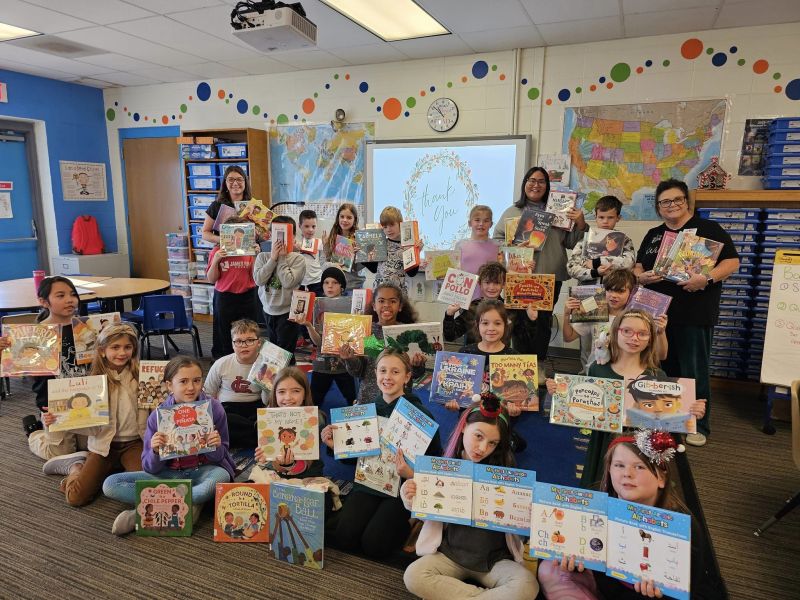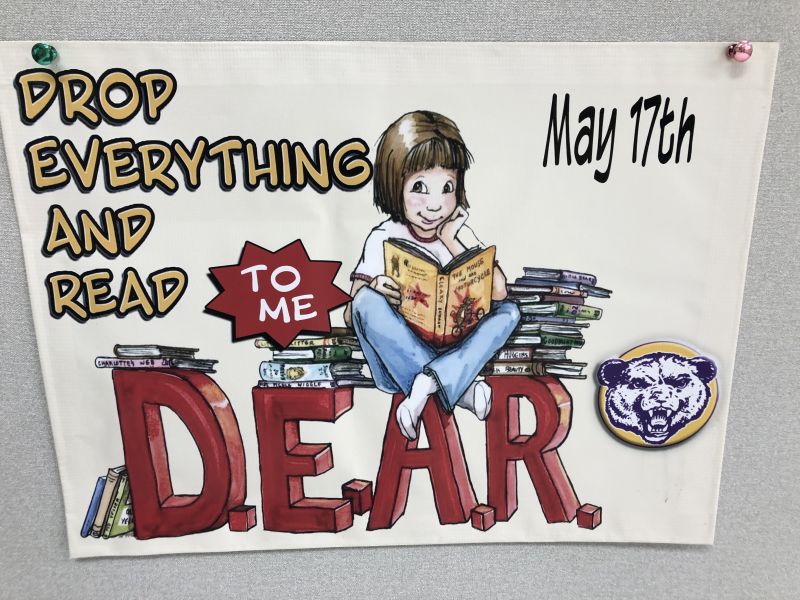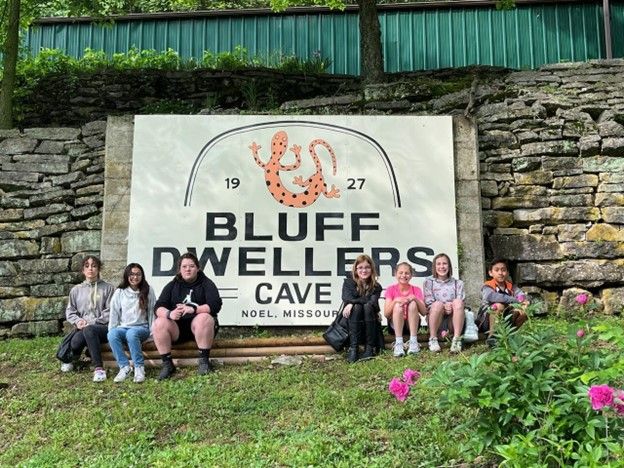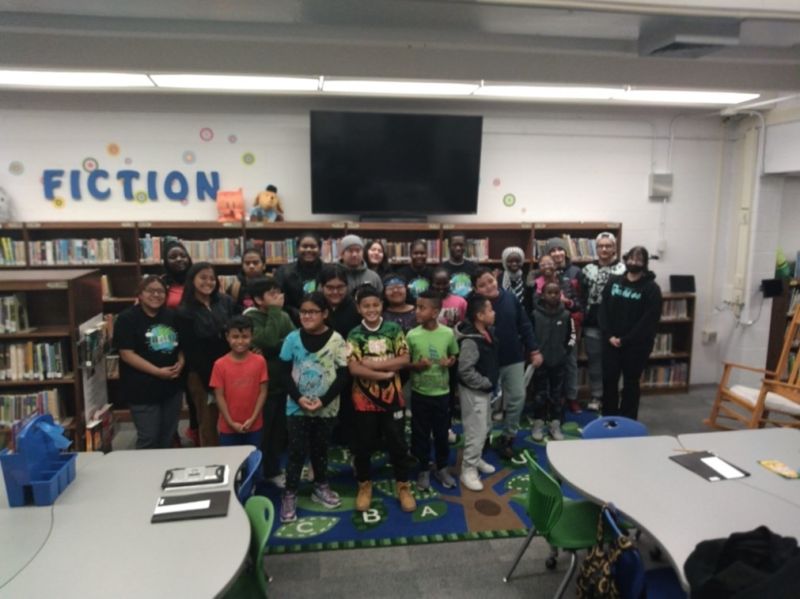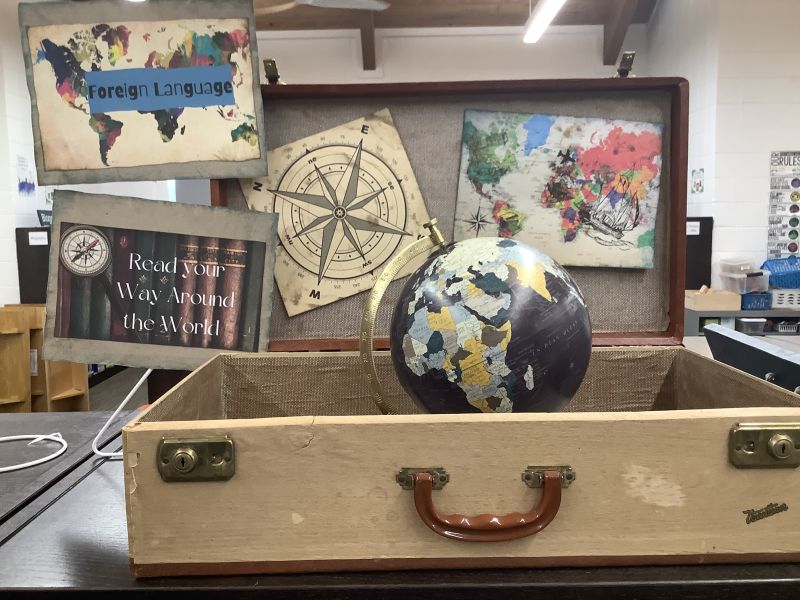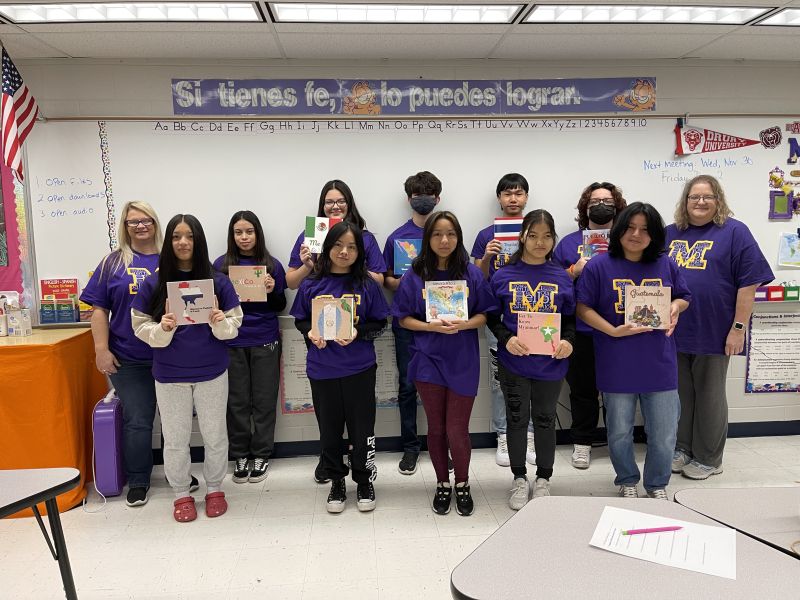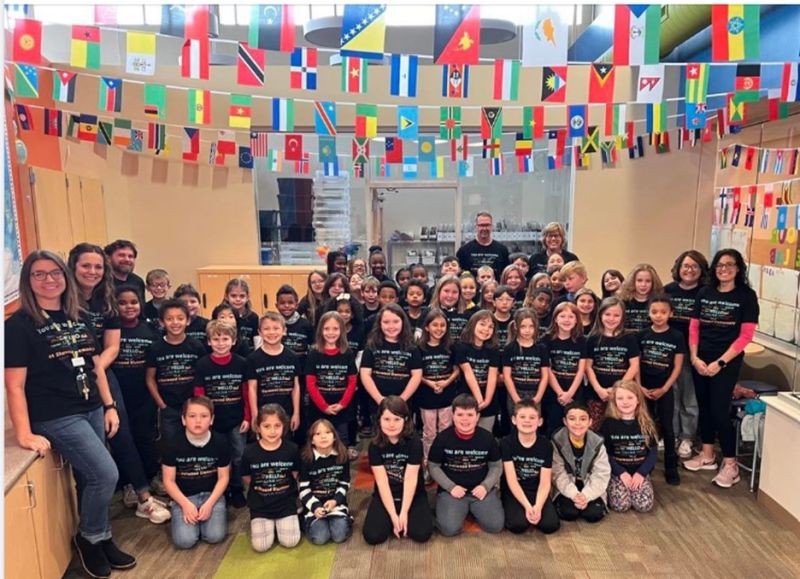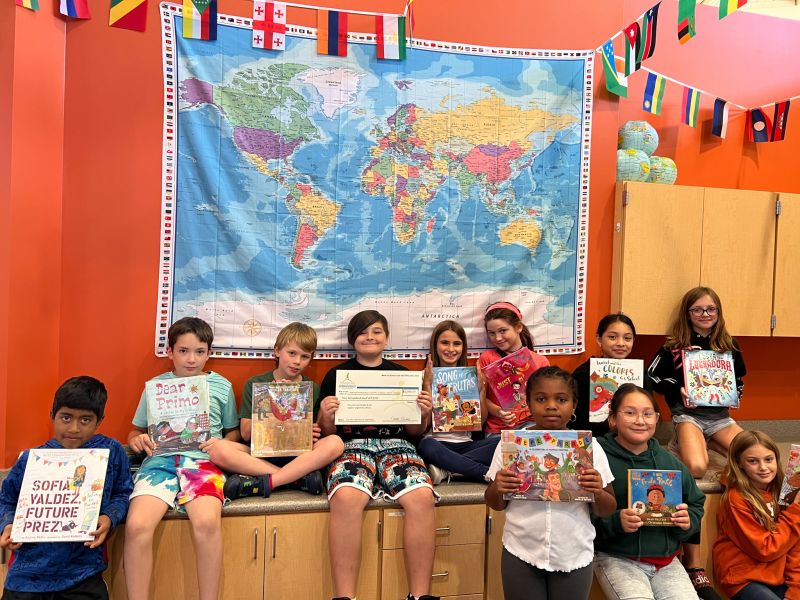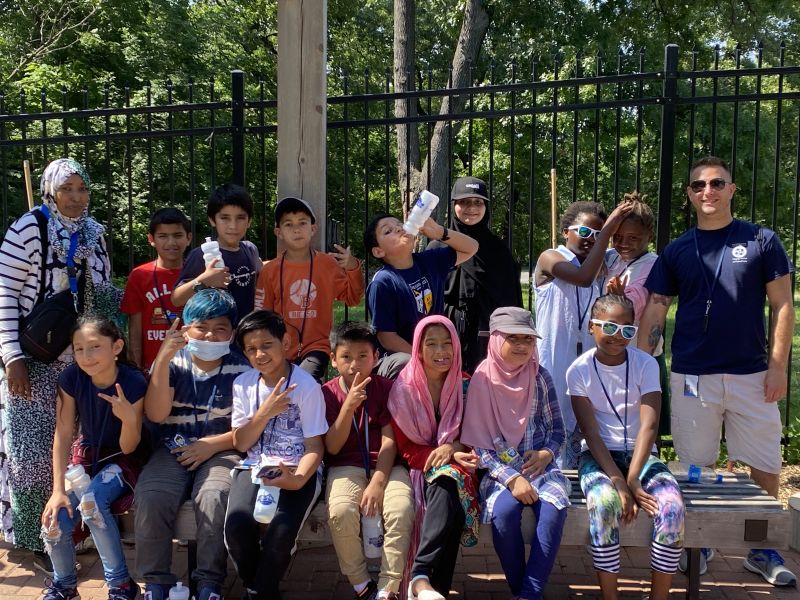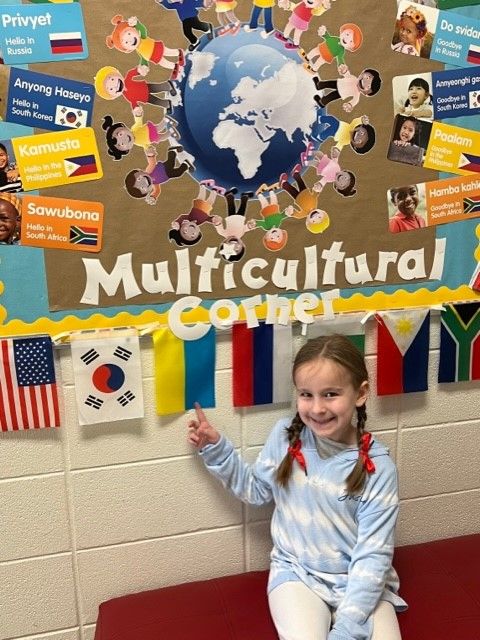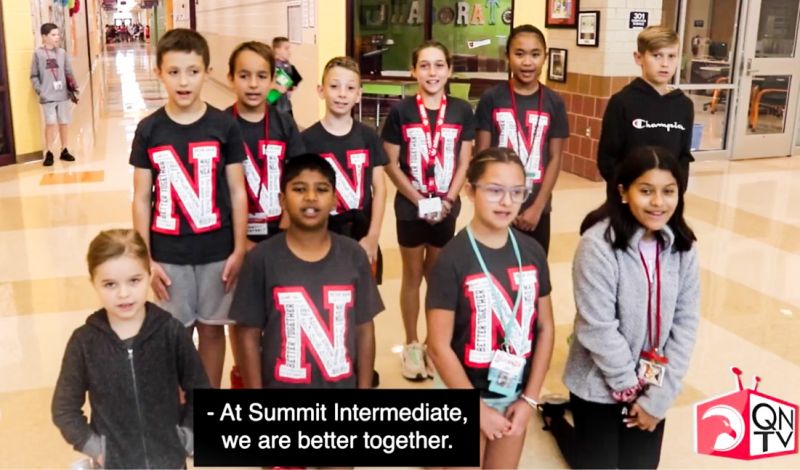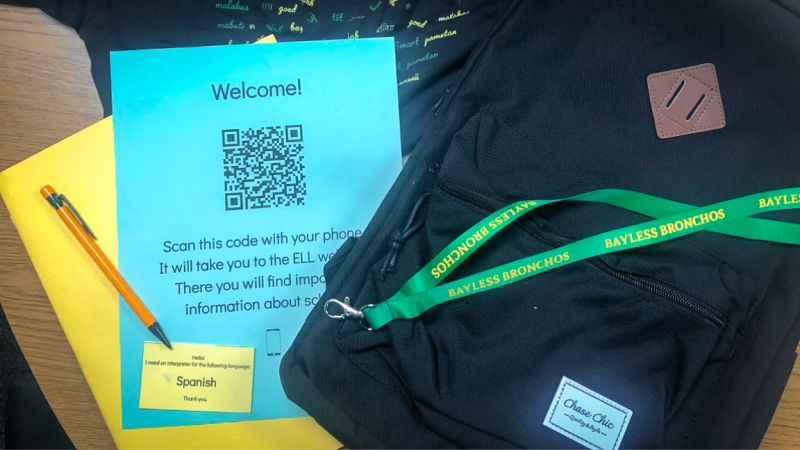Project Blueprint
Kelsi Thomas and Alyssa Wicklund, Wilder Elementary School, Springfield, Missouri
The Family Literacy Night project involves caregivers in the life of an elementary school. In preparation for the event, reading buddies in kindergarten and 4th grade partner to read multicultural books; they also learn to tell wordless picture books and author their own. Students record videos to explain what they gained from reading with their buddies. Multilingual students prepare presentations about their heritage cultures to showcase their learning during Family Literacy Night.
Goals
We believe that most families desire to help their children succeed but don't always know how. We aspire to provide families with the confidence and tools they need to participate in meaningful reading activities in the comfort of their own homes.
We want students to be interested in literacy as a result of their interaction with a reading buddy. Kindergarten students will be mentored by a more experienced learner, while 4th graders will become role models in our school community. During a literacy night event, they will involve their family in their learning. The literacy night will provide parents with an opportunity to learn about the importance of their engagement and involvement in their students' learning, as well as resources and ideas for families to use at home with their children to further engage them in their child's education and promote lifelong readers.
Timeline
September
Finalizing Grant Requests - Books, Books, and Books - Monday, September 20: Grant requests can be time consuming, yet well worth the effort in the end. For this project, we used an Amazon Wishlist to collect titles that we explored or which were recommended to us.
Reading Buddies Ready! Set! Go! - Wednesday, September 29: We met for the reading buddies portion of our project for the first time, and let the fourth grade reading buddies introduce themselves. Our first focus was introducing our multicultural library. Both classes seemed to enjoy it! All our supplied arrived for our Family Engagement Project; see the impressive stack of new materials piled up in the office.
October
Reading Buddies - Thursday, October 7: We met again a week later, and the kindergarteners were thrilled to meet up with their reading buddies again! Overall, we opted for the students to pair up with the same student they read with during the previous week.
November
Reading Buddies - Friday, November 5: Our building principal joined the experience in the role of classroom helper. He gained first-hand experience with our Reading Buddies Collaboration as he interacted with a pair of students on the carpet. It is beneficial for all students to see the principal within the classroom setting and even more vital to have positive interactions with him outside his office. We hope he can join us more often and even be a guest reader in each class.
Final Stages of Preparation for Our Literacy Night - Tuesday, November 9: All kindergarten and 4th grade classes met to read and enjoy wordless picture books. We pooled our pictures together in order to create a video highlighting our Reading Buddies partnerships. We informally surveyed students to get useful feedback on their reactions to our Reading Buddies initiative. (Their heartfelt and candid responses reminded me why I enjoy spending my day surrounded by kids.) After school, we met at Costco to purchase refreshments for the families and items for drawings, which included “early reader” books for the K students and hardback journals for the 4th graders. We were excited to give away these resources to promote literacy at home.
Wordless Picture Book Project - Wednesday, November 10: This week the fourth-grade focus shifted to our wordless picture book library. Teachers had been using them to model various approaches to “read alouds” and now students chose to partner together during our afternoon literacy stations to practice reading from our new collection. Some of our favorites are Chalk and Fossil by Bill Thomson. Students also began planning and creating their own wordless picture stories. We purchased for them blank hardbound books to publish their own wordless picture books and they are so excited. All language domains are supported through this activity, and we are eager to see their creativity shine.
Reading Buddies - Thursday, November 11: This was the final day of preparation before our Family Literacy Night. We looked over our event registration list to pair up students who were planning to attend the event. Some of the students were confused why their partnerships were changing and even seemed disappointed.
On a positive note, the connections between students became strong, which was rewarding to notice. When I announced to the 4th grade class that we were reading to the kinders today, I noted a student’s “Yes!” with a double fist pump. Another student, who was going to stay back to work on a missing assignment pleaded, “Can I please read to the kindergarteners?”
Literacy Night - Friday, November 12: The good turnout surprised us, especially, considering the personal and professional obstacles hurled at us this semester. We appreciated those who volunteered their Friday afternoon to help us, including our ELD Specialist, a 2nd grade teacher, and the other 4th grade teacher. Although the 4th grade wordless picture books were not finished, families were able to see the planning and progress students had made thus far. Our contact with the Chin Church to highlight cultural traditions did not work out as hoped; technically, volunteers are not permitted in our building due to district guidelines. Instead, we asked our 4th grade students to give a short presentation about their home cultures. The students, who tend to be shy in class, were eager to introduce their heritage and created their own Google Slides presentations. We were impressed with them for standing up in front of their peers and many unknown adult faces!
Reflecting on the Literacy Night, we realize some aspects did not turn out the way we planned, including providing a survey for families and having a sign-in sheet available. We were able to send out an RSVP through Google forms, which replaced the sign-in sheet.
December
Collaboration Between All Kindergarten and 4th classes - Friday, December 3: We were able to coordinate and arrange for all K and 4th grade classes to meet. We did most of our scheduling and communication for Reading Buddies through a group text, which seemed to work best for all of us. Collectively, we were flexible when we had substitutes or counseling lessons, adjusting, or adding to our plans as needed. Projects like this are best implemented when there is a supportive, caring, environment between teaching professionals.
Presentations to Kindergarteners - Monday, December 6: The two fourth grade students who presented at the Literacy Night toured other classes with their presentation about their heritage. Both classes listened so attentively as they learned about food, travel destinations, traditional crafts, jewelry, and customs from these students. It was delightful to watch how fascinated all students were by life and traditions in a culture that was new to them.
Step-by-Step Plan to Support Multiliteracy
- Students engage with multicultural books and wordless picture books.
- Pair Reading Buddies to meet once a week throughout the semester (or longer).
- 4th-grade students create wordless picture books to share with Reading Buddies.
- Prepare for Family Literacy Night.
- Start talking to your class about the literacy night early and send out weekly reminders.
- On the day of the event, preview some of the activities in class to get the students excited.
- Set the Literacy Night agenda (here is ours):3:45 Refreshments/
o 3:45 Refreshments/Watch video slideshow
o 4:00 Introduction of teachers
o 4:05 Explain Reading Buddies initiative with multicultural and wordless picture books.
o 4:15 Divide into grade levels
o K - Introduce supplies. Discuss activity options, distribute supplies and books to take home.
o 4th - Students share their presentations. Discuss take-home supplies and hold the drawing for journals and other items. Students showcase their learning with the wordless picture book activity.
o 4:30 Encourage families to read multicultural and wordless books together.
o 4:45 Teachers are available for questions and conversation. - Watch video slideshow. Share literacy activity ideas, books, and resources with the families that will make it possible to work on grade-level skills in the home. For example, invite families to engage with wordless picture books and create their own with magazine cutouts.
| Multicultural books library | 435 |
| Wordless picture book library | 620 |
| Tote bags | 85 |
| Magnetic letters for kindergarten (Set of 20) | 220 |
| 50 Laminated pre-phonics CVC picture reading cards | 150 |
| Comprehension cubes - Set of 6 foam cubes (red, blue, green). Each 4th grade student would have 3 to use with their reading buddy. | 195 |
| Blank books for 4th graders (Set of 70) | 195 |
| TOTAL | 1,900 |
What Did it Look Like?


Translated into Hakha Chin




Wordless Picture Book Project - Planning, Drafting, Revising, Editing, Sharing and Publishing!






Literacy Night Highlights - Kindergarten





Literacy Night Highlights - 4th Grade
Reflection on the Project
Our Reading Buddies initiative began during the last week in September as planned. We met seven times leading up to our Literacy Night, usually on Thursday afternoons; we also met the first Friday in December for a total of eight meetings. We had full participation between all kindergarten and 4th grade students for four sessions. Flexibility and understanding between collaborating teachers made this project successful for the three classes.
Our new multicultural library was the focus for the first month of our reading buddy partnerships. Students heard stories from different cultures. During our Literacy Night, three students celebrated their culture, bringing props from home, and highlighting the differences in their first language or L1.
In November, we added the additional wordless picture books as options for reading buddy books. Furthermore, during writing mini-lessons, teachers referenced the 4th grade beginning of the year writing project centered around The Mysteries of Harris Burdick to activate their background knowledge with wordless prompts. When reading the wordless picture books to the class and summarizing our grant resources to the families who attended the Literacy Night, teachers admitted that those books can be a little intimidating to those that are unfamiliar with their format. At first, a book without words seems a little preposterous, unless you know the true benefits they can offer all learners, especially language learners. While reading, students practiced making inferences, using descriptive language, and possibly even adding their own dialogue.
At our Literacy Night, we challenged parents to share their version of their child’s favorite wordless picture books to compare their stories. This was a successful portion of our project as parents and children chose books and found a place to read around the library.
Our approach to the reading buddies has proven to be very successful with student enjoyment and engagement. It is something that the students, kindergarten and fourth grade both, look forward to and get excited about. Some examples of the success in our approach and plans were the take home activities and the relationships built through the reading buddies. Students are eagerly asking, “Are we meeting with Reading Buddies today?” As students are finalizing details of their wordless picture books, one student shared that she is going to dedicate her book to her kindergarten buddy. She also shared that the kindergartener invited her to the birthday party. She asked, “Do you think I can get it finished so I can give my wordless book to her at the party?”
One area that we could have changed was collecting the translated copies of the invitations earlier in the process. With our main multilingual population speaking Hakha Chin, we felt as though we were scrambling around to get the information translated correctly. If we had started the process earlier, and allowed ourselves more time to gain the information we needed, it may have seemed less stressful in that area.
In addition to allowing ourselves more time, we feel as if we can better advocate to our district office that there is a need for more translators for this specific language. We rely on college students within the Chin community. This results in scheduling difficulties.
We had multiple bumps in the process because of illnesses and class sizes being drastically different. One of the main areas we would do differently is to create multiple partnerships during our reading buddy times. For example, the fourth graders getting to know two or three different kindergarteners, and vice versa. We had a couple disappointed students at the Literacy Night because their reading buddy was unable to attend, and creating multiple partnerships would have prevented some of that disappointment. The appeal of the Literacy Night for several students was the fact that it promoted meeting their reading buddy outside of school.
Our main purpose of the Literacy Night was to help families understand ways they can support literacy growth at home. We feel as if the items and activities that they were given at the Literacy Night can reinforce their specific literacy needs for each grade level. As we remembered Socorro Herrera’s research (2016) on literacy activities, we strayed from basic reading logs, and gave meaningful activities for them to do at home. Many Districts hold 2nd semester parent-teacher conferences in late February; moving forward, we can schedule check-ins with the families to see their progress on the take-home activities.
The engagement at the Literacy Night was wonderful for the families that attended. Everyone was excited to be in the building, meeting each other, and browsing the multicultural and wordless books.
The main technology we used throughout this whole process was in preparation for the Literacy Night. We did utilize Google Forms for the RSVP form we sent out to get an idea of who would be able to attend. We also created a WeVideo presentation for the event that included pictures from our Reading Buddy experiences, as well as quotes from students about what they enjoyed about Reading Buddies. Communication through various technology platforms helped us reach families on their preferred method of communication.
Through this process we learned that you could plan out every little detail, but in the end, you will always have areas where you need to be flexible. As we planned out this Family Engagement Project, we never would have guessed that our school would have some of the highest numbers of Covid cases in our district, or that the fourth-grade class would be double the size of the kindergarten class. We quickly learned that we would have to be flexible. Also, we learned how valuable collaboration from multiple parties is. Without the help and collaboration of others in our building, we never would have been successful.
We now see that our role and responsibility when working with diverse learners cannot be passive. We have a very large district, with a wide variety of languages and cultures represented. As teachers, we must be the voice for our students’ needs and ask for resources when they are not available to us.
Project Extension
As students finish their published piece, 4th graders can share their versions of wordless picture books to their kindergarten Reading Buddies. During the 2nd semester, the kindergarten students can visit the 4th grade classrooms since all collaboration has been in the K hallway. In spring, when the weather gets warmer, we can meet in the courtyard too. Additionally, we can reach out to families and teachers to gather pictures/magazines for K students to create wordless picture books with 4th grade buddies as their mentors. In the future, this wordless picture mini-book project for kindergarten students could begin as a “Where I’m From” poem, which could celebrate our cultural backgrounds. To extend the benefits of engaging with wordless picture books, we can use our student-made books in combination with the Martinez-Alba and Cruzado-Guerrero (2015) lessons to continue supporting language learners in our class.
Another goal is to encourage other grade levels to create reading buddy partnerships. Last year, each K-2nd grade classroom was paired with a 3rd-5th grade classroom to send words of encouragement during our Missouri Assessment Program (MAP) testing window. These partnerships could be created earlier during the 2nd semester to build a stronger bond between students across the grades. Because kindergarten and 4th grade already have an established partnership, those classes can write notes between students. At the end of the year, 4th grade students may return the favor to write words of encouragement or record messages on Flipgrid to the kindergarten students before taking the district’s iReady assessments.
The Family Literacy Night at Wilder Elementary was sponsored by the iELT-Ozarks project at Missouri State University; the budget was supported with federal funds from the U.S. Department of Education Office of English Language Acquisition.

